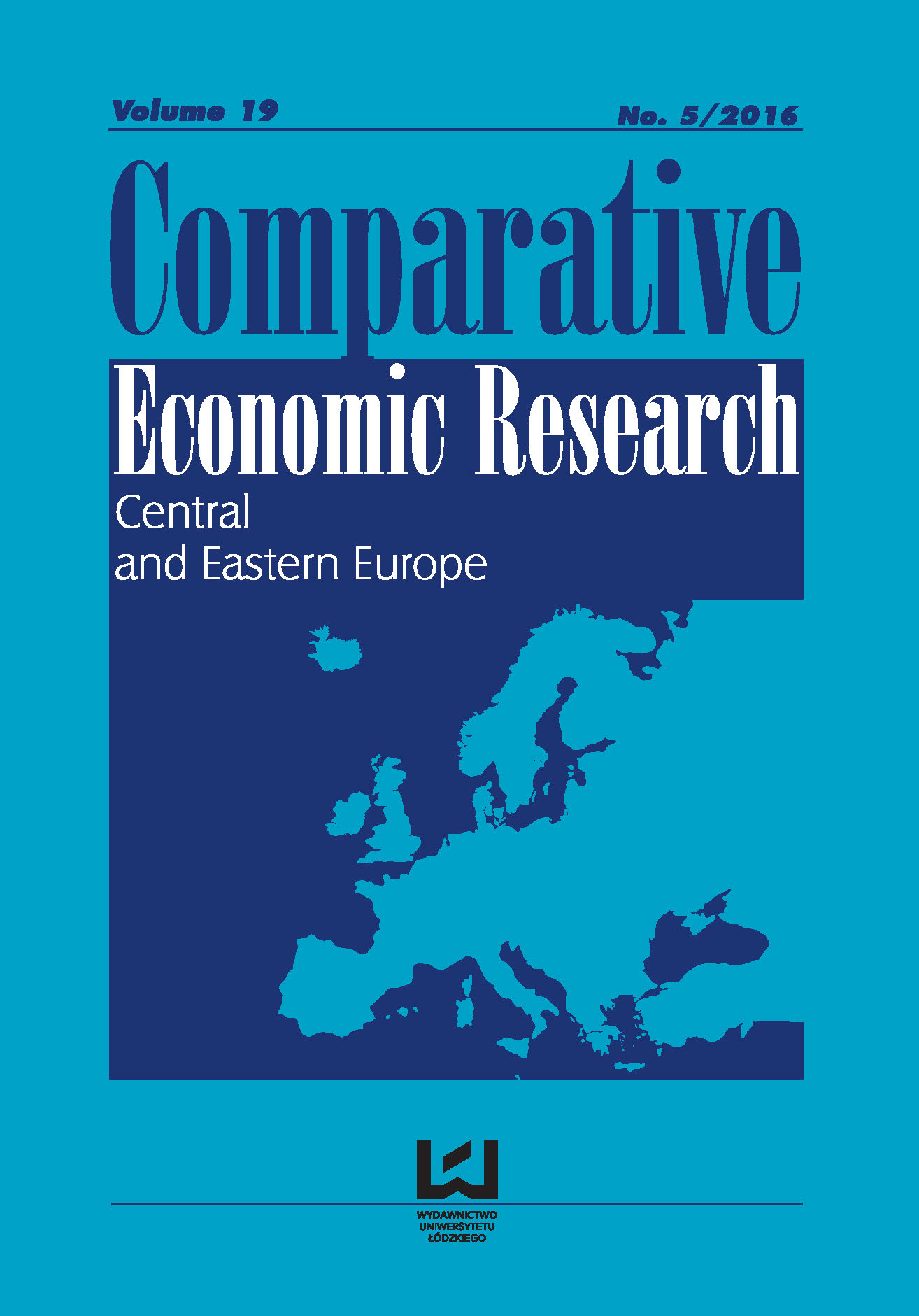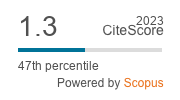Determinants Of Healthy Ageing For Older People In European Countries – A Spatio-Temporal Approach
DOI:
https://doi.org/10.1515/cer-2016-0043Keywords:
active aging, aging in good health, health careAbstract
The European Commission (EC) has identified active and healthy ageing (AHA) as a major societal challenge mutual to European countries. This issue has increased in importance due to the progressive ageing observed in European societies, that force authorities to take initiatives for support the activity of the elderly. One of the initiatives, widely recognised is The European Innovation Partnership on Active and Healthy Ageing, which strive to enabling EU citizens to lead healthy, active and independent lives while ageing.
The positive effect of actions for the AHA will be extension of the life in good health duration of EU citizens by two years by 2020. This is an important issue, as in 2013, women who have reached the age of 65 years in UE28 were facing on average 21.3 years of further life years and only 8.6 years (on average this amounted for 40.4 % of life expectancy) accounted for living in health, whereas for males, this ratio was estimated on 8.5 years in health of the anticipated further 17.9 years (47.5% of further life duration).
Life expectancy in good health in older age is influenced by many different factors, i.e. cultural, social, economic and accessibility to health services and the quality of provided treatment. The last aspect is related to both the economic development of the country and the health care system management. The significant factor that has been increasingly emphasised in documentation of World Health Organisation or European Commission, concerns the investment in public and individual health.
Taking into account the multivariate impact of objective and subjective factors on life expectancy in good health of elderly, the Authors decided to conduct the multidimensional comparative analysis for EU countries, including Norway, Switzerland and Iceland as well. Among the objective factors Authors distinguished: proportion of population (men and women) aged 65 years and more, economic development of the countries measured by GDP per capita, healthy life years expectancy in absolute values for males and females at 65 years, health care expenditures in PPS per inhabitant aged 65+, whereas the group of subjective characteristics consisted of: self-perceived health for people aged 65+ and self-reported unmet needs for medical services.
The article aims to investigate the relationship between the length of the further life in healthy for men and women aged 65 years and selected factors in European countries in the period 2005–2012. For this purpose, following methods were used: 1/ spatial distribution of characteristics – rates of change in selected periods: 2005 and 2012, 2/ tests for dependencies using correlograms and Spearman’s rank correlation coefficients, 3/ cluster analysis: on the basis of Ward’s methods spatial similarities (among countries) were indicated. As the source of data the Eurostat database were used.
Downloads
References
Contrada R.J., Cather C. and O’Leary A. (1999), Personality and health: Dispositions and processes in disease susceptibility and adaptation to illness, [in:] Lawrence A. Pervin & Oliver P. John (Eds.), Handbook of Personality Theory and Research, Guilford Press, New York, NY.
Google Scholar
Courtin E., Jemiai N., Mossialos E. (2014), Mapping support policies for informal carers across the European Union, Health Policy, October vol.118 issue (1).
Google Scholar
European Commission, DG Employment, Social Affairs and Inclusion, The Social Protection Committee (2015), Progress Report on the review of the Joint Assessment Framework in the area of health, SPC/2015.2.2/4.1, Brussels.
Google Scholar
Eurostat (2012), Active ageing and solidarity between generations. A statistical portrait of the European Union 2012, Luxembourg.
Google Scholar
Eurostat (2015), People in the EU: who are we and how do we live? Luxembourg.
Google Scholar
Government of Newfoundland and Labrador, Department of Health and Community Services (2006), Healthy ageing for all in the 21st century – discussion paper, Canada.
Google Scholar
Hampson S.E. and Friedman H.S. (2008), Personality and health: A lifespan perspective, [in:] Oliver P. John, Richard W. Robins, Lawrence A. Pervin (eds), Handbook of Personality, Guilford Press, New York, NY.
Google Scholar
Mortensen E.L., Flensborg-Madsen T., Molbo D., Christensen U., Osler M., Avlund K. and Lund R. (2014), Personality in late midlife: Associations with demographic factors and cognitive ability, Journal of Ageing and Health, SAGE, Vol. 26(1).
Google Scholar
Moulaert T., Biggs S. (2013), International and European policy on work and retirement: reinventing critical perspectives on active ageing and mature subjectivity, Human Relations, 2013 66(1) (online) http://hum.sagepub.com/content/66/1/23 (access 9.01.2013).
Google Scholar
Stamati F. and Baeten R. (2015), Varieties in healthcare reform: understanding EU leverage, [in:] David Natali and Bart Vanhercke (eds), Social policy in the European Union: state of play 2015. Sixteenth annual report, European Trade Union Institute (ETUI), European Social Observatory (OSE), Brussels.
Google Scholar
Tengland PA (2011), The Concept of work ability, Journal of Occupational Rehabilitation, June No 21(2): 275-85. (online) http://www.ncbi.nlm.nih.gov/pubmed/21052807
Google Scholar
Thomson S., Figueras J., Evetovits T., (et.al.) (2014), Economic crisis, health systems and health in Europe: impact and implications for policy, Policy Summary 12, World Health Organisation Regional Office for Europe Geneva, European Observatory on Health Systems and Policies, Copenhagen.
Google Scholar
UNECE, Active Ageing Index, (online) http://www1.unece.org/stat/platform/display/AAI/Active+Ageing+Index+Home (access 21.10.2015).
Google Scholar
UNECE/European Commission (2015), Active ageing index 2014:Analytical report, Report prepared by Asghar Zaidi of Centre for Research on Ageing, University of Southampton and David Stanton, under contract with United Nations Economic Commission for Europe (Geneva), co-funded by European Commission’s Directorate General for Employment, Social Affairs and Inclusion, Brussels.
Google Scholar
United Nations, Department of Economic and Social Affairs, Population Division (2015), World Population Ageing 2015 (ST/ESA/SER.A/390), New York.
Google Scholar
Urbaniak B. (2014), Koncepcja aktywnego starzenia się w polskich realiach, [in:] Lucyna Machol-Zajda and Cecylia Sadowska-Snarska (eds) Rynek pracy i polityka społeczna w XXI wieku. Aktualne problemy, Wydawnictwo Uniwersytetu w Białymstoku, Instytut Pracy i Spraw Socjalnych w Warszawie, Białystok, Warszawa.
Google Scholar
World Health Organisation, Noncommunicable Diseases and Mental Health Cluster, Noncommunicable Disease Prevention and Health Promotion Department Ageing and Life Course (2002), Active ageing: A policy framework. A contribution of the World Health Organisation to the Second United Nations World Assembly on Ageing, Madrid, WHO.
Google Scholar
World Health Organization (2015), World report on ageing and health, Geneva.
Google Scholar
http://50plus.gov.pl/-/starzec-sie-aktywnie-czyli-jak-ksztaltowac-wlasny-rozwoj-w-starszym-wieku-59811
Google Scholar
http://www1.unece.org/stat/platform/display/AAI/IV.+Charts+and+tables
Google Scholar
http://ec.europa.eu/social/main.jsp?langId=en&catId=1062&newsId=2430&furtherNews=yes
Google Scholar
United Nations, 2015, World Population Prospects: The 2015 Revision, http://esa.un.org/unpd/wpp/, (access: 7.07.2016.)
Google Scholar
Downloads
Published
How to Cite
Issue
Section
License

This work is licensed under a Creative Commons Attribution-NonCommercial-NoDerivatives 4.0 International License.











